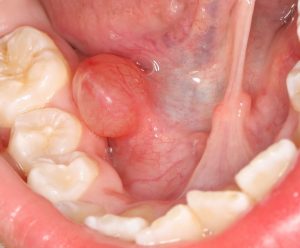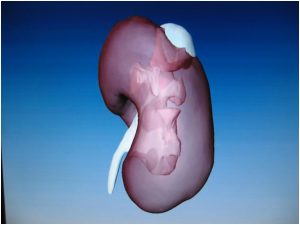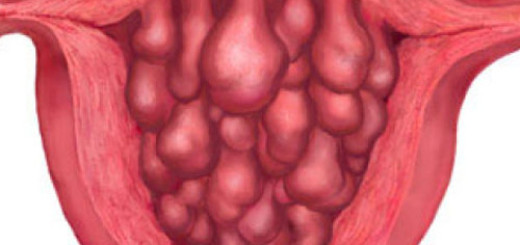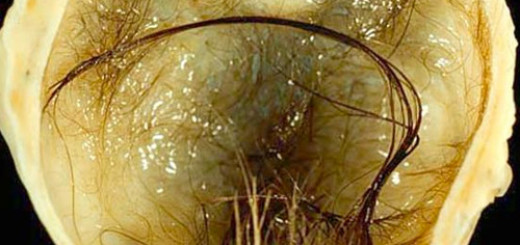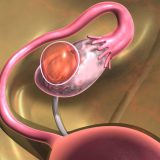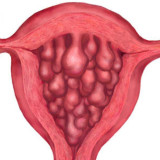A cyst is usually a small round formation that is a bit like a balloon. The closed cavity of the cyst can be filled with liquid, gas or semi-solid material.
A cyst can appear anywhere in the body and vary in size. Some cysts are so small that they can only be detected under a microscope, others are so large that they inhibit neighboring organs or tissues.
About 30 percent of adults have a cyst of some kind. What should we know about them?
Cyst is a product of our body created inside parenchymal organs such as kidneys or liver, but not only. Cysts also appear in places that change over time – for example, in the ovaries or in the bones of a growing children.
A cyst has a shell that can be made from the epithelium (then we are talking about real cysts) or from other tissues other than the epithelium (pseudocysts). It is characteristic that they are filled with liquid, which can have different colors and consistency. The most common contents of cysts are inflammatory cells (macrophages, lymphocytes or leukocytes). Although there can also be red blood cells and cancer cells. The last two content types indicate the beginning of the cyst transformation into cancer. However, such transformations are not common.
Causes
The most common cause of a cyst is genetic predisposition. If a parent has a cyst, then most likely his children will have it. This is especially true for polycystic kidney disease. Fortunately, the kidney cyst is not a serious disease, usually have a mild course and do not cause clinical symptoms.
The second most common cause of a cyst is inflammation in a certain body area. Especially in case of ovarian cysts. They occur as a result of the previous adnexitis. The same applies to jaw cysts, which arise as a result of untreated caries.
Among the cysts causes, especially in the joints, mechanical damage is also mentioned.
Symptoms
Cysts, depending on their size and location, can cause some symptoms. But usually they develop asymptomatic as long as they do not interfere the organs functioning or do not put pressure on neighboring healthy internal organs.
Only with time they can hurt. Most often pain in a cyst is colic, reinforcing when performing a certain movement, such as bending or lying on a particular bodyside. Later, this pain can get a chronic form. When the cyst begins to hurt, there is a high temperature and chills. Most likely this means that there is inflammation inside the cyst or it turns into a form of cancer.
Diagnostics
Some cysts, depending on their location, can be detected by the paitient himself. For example, cysts of the skin and subcutaneous tissues are usually visible to the patient with the naked eye.
Most cysts can be detected by ultrasound. This diagnostic method also allows to determine their size, position and potential danger.
Breast cyst can also be detected by palpation.
When examining the cyst, dopplerography is also used. In this case, the blood vessels around the organ are studied. If their system is broken, it may indicate the formation of new blood vessels, which is typical for the process of neovascularization or cysts formation.
Sometimes cysts can be detected with the help of urine or blood tests. The presence of protein in the urine, an increased level of creatinine and urea in the blood, as well as abnormal concentrations of sodium and potassium ions may indicate the presence of cysts in the kidneys. Elevated liver function tests, bilirubin and proteinopathies fluctuations means there is a cysts in the liver.
Cyst treatment
Cyst treatment method depends on the cyst location, size and the danger it brings.
Most often, cysts disappear by themselves, so only need medical supervision is required. Regular examinations made by a doctor using ultrasound make sure that the cyst does not turn into a tumor, and that there is no inflammation starting.
In case of ovarian cysts, after making sure that they are not cancer, hormonal treatment is applied. This reduces the resulting lesions of the organs and facilitates their subsequent laparoscopic removal.
Laparoscopy is the most commonly used method for the removal of non-hazardous cysts because it leaves few scars and is an effective method. When changes in the cyst are difficult to monitor, or when the doctor suspects that the tumor is dangerous, surgery is performed. In addition to the cyst itself, some tissues around it are also removed. This is done to ensure that the tumor does not grow from the remaining cells.
Then tissue of the cyst is examined under a microscope for the presence of tumor cells.
Cyst is a relatively harmless formation, as a rule. But, unfortunately, cyst is a quite common disease in modern world. They appear in the kidneys, liver, ovaries, joints and bones without causing harm in most cases. However, it should be remembered that when we find a suspicious sealing on the body, it is worth going to the doctor and check whether it is a cyst.
